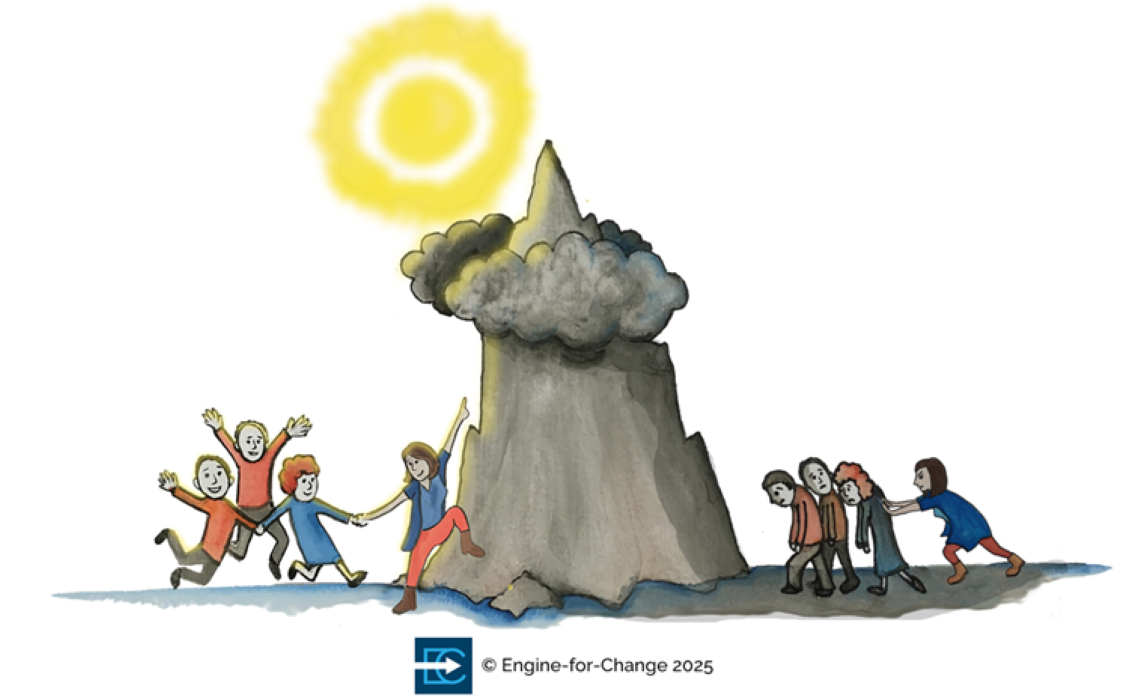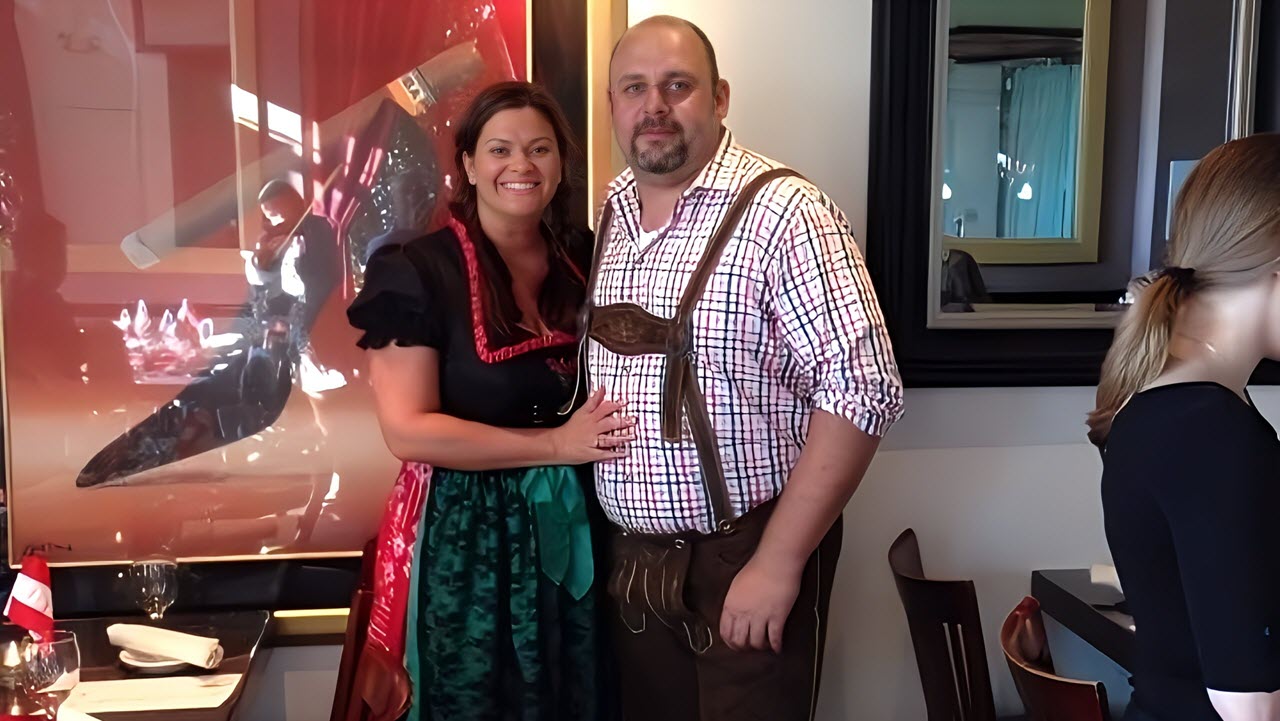Over 20 years, clients across a range of industries have allowed me to be their partner in driving change across their organizations. At the end of nearly every project, I made note of a new lesson learned to keep in mind for future projects. These are 20 of the most significant. I’m still learning. My list will keep growing!
- Know your Statement of Work (SOW).
I once had a client who was so bad about scope creep (requesting additional tasks and deliverables that were outside of the contract) that it became his nickname among our team (“Did you see the email from Scope Creep Joe?”). It’s great when the client finds value in your work and wants more support. However, to protect the budget and timeline, you must be versed enough in your contract that you can confidently detail what additional work can be taken on and what can’t. Sometimes, that means replacing a planned deliverable with a different one, which is a good option when it doesn’t affect the quality of the overall solution. Other times, it means adding time and/or budget. In any case, it’s important that you and your client are clear on how their requests will change the contract (and document the changes!).
- Always close the loop with the key stakeholders.
I led a team to redesign a client’s learning curriculum. I had a good relationship with the client’s Project Manager, who was my daily contact. During a one-on-one conversation, she said a key deliverable—a learning technologies assessment—was no longer needed. I sent a follow-up email recapping our discussion so she and I were aligned. Unfortunately, not everyone was. When our team presented our recommendations to that Project Manager’s boss, one of the first questions the VP asked was what happened to the technology assessment. The Project Manager stayed quiet and I was too new to the client, and my own company, to feel comfortable calling her out. Instead, our team fell on the sword of “misunderstanding.” Since that project, I no longer assume the client team is communicating and I include all key stakeholders (especially those signing the check!) on recaps of key conversations and decisions.
- Bring food!
A lot of my work over the years was qualitative research, which involved a lot of interviews and observation—hours sitting in someone’s workspace, watching over their shoulder, and asking questions. I did this in early morning hours with ER Physicians, on night shifts with Control Room Operators, during military exercises, and with SWAT teams. All busy people with many things pulling for their focus. I’ve learned that people are more amenable to your presence when you bring food. Do you think an ER doctor wanted to sit down for a two-hour interview with me at 7:00 am? Nope. Did it help to bring her coffee? Definitely. Having dinner delivered to the Control Room opened many opportunities to shadow operators at their desks. I’m just saying—putting good snacks in the conference room never hurts.
- Recognize that not all clients are happy you’re there.
Here’s a little secret—not everyone will be happy that an outside consultant is onboard. Okay, that’s not a secret, but it can make things challenging. Someone may be reluctant to share information or join meetings. That can be frustrating. Sometimes, they may undermine your work. That can be detrimental. I recall when a client’s lead developed her own change management plan and promoted it as one we’d designed in partnership. We hadn’t. She undercut the direction of our team’s planning before we could present it to her leadership team. I have a high threshold for stress. She blasted right through it! Still, others recognized our team as the change management arm of the team, and ensured we provided input. Find your allies. Know who’ll help you navigate the landmines, who’ll back you up in meetings, and who’ll be another set of ears during conversations. The helpers are always there.
- Know the client organization’s politics to play well with others.
As a consultant, you may engage more with a specific department than the entire enterprise. Still, it’s important to know how different departments across the company work together. Will a change affect another team or department, even in a small way? Does the leader of the team you’re engaging with have issues with the leader of another team from whom you need to collect information? Is the department you’re working with seen as the “spoiled group” that gets everything, so other teams may be unhappy about the work? Are there other department leaders who may be champions of the project, even if their groups aren’t involved? Sometimes, you can comfortably ask these questions directly of the project sponsor. If not, just listen closely. It usually comes out eventually.
- Empathize!
It can be easy to forget that your project is not your client’s only priority. It’s easy to get annoyed when the client isn’t responsive to email, or doesn’t return a contract quickly, or isn’t on time for a meeting. This is something I tried to keep in mind as an external consultant—practicing patience. Now, as I lead change within an organization, those assumptions have been reinforced. Sometimes there are several fires to be addressed on the client’s team and, while your issue is critical for you, it’s only smoldering compared to their other challenges. It’s important to keep these things in mind and always give some grace. Partnerships partnered by empathy can go a long way.
- Bring the client along the project journey.
I learned this lesson from the consultant’s bible—Flawless Consultant by Peter Block (seriously, if you don’t have a copy of this book, are you even a consultant?)—and it’s proven necessary and valuable. Be intentional about saying when you’re completing one part of the work and transitioning into the next. “We have finished completing interviews and are moving into analysis… The analysis is complete and we will present preliminary findings before moving forward to design.” This keeps the client engaged in the journey and clear on what progress is being made. It also gives them a chance to call out any additional needs—such as someone else you may need to talk with—before you move too far down the path.
- Know what success looks like beyond the organization.
It should be commonplace to ask what success looks like for the project. It’s important to know the key performance indicators that the work is being measured against. However, the organization’s success is not what I’m referring to here. One of my former bosses taught me the importance of this question in building relationships with your counterpart within the organization. For your client team partner—often the person managing the whole, or some portion of, the initiative—what does success look like for them personally? Could delivering the project successfully result in a promotion? Will it give them an opportunity to lead more or larger initiatives? Asking this question (in a one-on-one discussion) and reinforcing that you want to help them be successful really helps to start building trust and partnership.
- Know the players—both your team and the client’s.
Organizational position doesn’t always equal project role. As a Principal Consultant, I often managed the overall project. Sometimes, I filled the role of Communication Consultant or Instructional Designer on a team led by someone else. Organizationally, I may have been the most senior-level person on the team, but as far as the project team and the client were concerned, I was solely in a deliverable execution role. This is a basic rule of project and team management, but it’s important that everyone is clear on who is filling what roles. This is especially important if the team has worked together previously with different responsibilities. It’s also important to reframe the roles, if needed, with a client who has worked with the team in the past.
- Don’t be afraid to get personal.
It’s possible to be professional and develop a personal relationship with your client. Ask them about a birthday party they were planning. How is their sick child? Compliment their shoes (seriously, it’s okay). I like learning about a client’s interests so I can recommend a book or podcast they may enjoy. Clients have recommended things to me for the same reason. I had a client miss several meetings, which put a strain on our work schedule. When I reached out to find out why, she was emotional, and shared that she was going through a divorce. She was open because she knew I cared about her as a person. She was apologetic about missing meetings and we discussed how to get things on track. I also offered to take some tasks off her plate if it would help create some space for herself. Professionals are people first, and it’s okay to care about them.
- Protect your team.
Being a team leader means supporting your team as much as you support the client. One of my most difficult conversations happened when a team member felt demoralized by a client. She’d been dismissive of his contributions and condescending during their interactions. In our one-on-one, I wanted to describe what I’d observed without her feeling attacked. I started by saying that my job was three-fold: to help her be successful; to ensure the quality of our team’s work; and to make sure our team was working in a professional and safe environment. I wanted to discuss some things related to the third point. We had a good discussion and she was taken aback by how she’d come across. She took it upon herself to apologize privately to him, and that went a long way for us all. Make sure your team can trust that you’re looking out for them.
- Have some fun!
All work and no play can get boring. If a client invites you to a team event, consider it an honor and attend. (This is coming from an introvert!) When the project reaches a significant milestone, do something fun with for the client’s team. For example, when a client in the healthcare field got their long-awaited FDA approval, we brought them a cake branded with their product’s logo. To help a client celebrate their HR system go live, we designed beer bottle labels with the project’s branding (for the beer cart they took around the office!). And when my client invited me along for their sales team training in Florida to observe and meet the team, I went along. Hanging out on the party bus with the all-female sales team was tough, but it was all in the name of relationship building and project success!
- Be flexible in your approach.
Sometimes, the client is a few steps ahead of where you think they should be. Perhaps they haven’t communicated enough or they’ve scheduled training without mapping who needs which skills to target the content. You won’t always have the luxury of early engagement, so you have to be flexible and meet the work where it is. That may mean course correcting poor communication (which is tricky when it comes from an executive who needs to back off a message while saving face) or getting the right people engaged in a journey that’s been going for a while. You can’t always design the plan you want. That’s okay. Sometimes you’ll need a one-size-fits-all approach. For example, a meeting may serve the dual purpose of building awareness and documenting processes. Focus on what will drive end users to successful adoption and build the plan—even if it’s abbreviated—to get them there.
- Play nice with the vendor partners.
It takes a village to manage change, and that may require you to work with other vendor partners—some of whom may be your competitors. Let’s face it, this can be awkward; especially if one of you is hired to do the kind of work that the other one also could’ve done. Showing professionalism and partnership with all vendors says a lot to the client about the kind of consultant you are. You may also need inputs from the other partner’s work for your tasks, and a good collaborative relationship makes it a lot easier to make those requests. The chances are also good that you’ll cross paths again with future clients, so you may as well learn to play nicely.
- Sweat the details.
Strategic thinking and the ability to build a comprehensive change plan are important. That’s why you’re there, and it requires a balance of big-picture thinking and managing the details of the plan. However, you should also take the time to learn the details of your client’s culture and organization. Look up their branding and logos, and use the right colors and fonts. Know their tagline. Call their initiatives by the right names. If you’re working with a consumer goods company, don’t stroll in drinking, eating, or wearing a competitor’s brand. These small things are anything but. Know the details that matter to your client, and take care to get them right.
- Be prepared to define change management. More than once.
Here’s the thing—a client may hire you to “do change management” without actually knowing what that entails. You’ll have a chance during the proposal phase to outline and clarify it for them. Then the work will begin, and you’ll have the chance to define it for the other members of the team. And for the other vendor partner who wonders why you need to be part of their requirements sessions or have input into training. So, be prepared with a clear, concise, and consistent description of your approach—what, why, how, when, and who (and to what level of effort).
- Know and respect the project sensitivities.
In addition to being ready to discuss your role as the change management team member, be prepared to explain to others within the organization (who aren’t on the project team) why you’re there. Recognize that sometimes you’ll work on projects that aren’t yet public in the company, so be aligned with the core team on how to answer this. Oftentimes, I’ve been part of meetings that were marked as “private” on the calendar, and they are for a reason. Understand the sensitivities within the organization and don’t get too eager to talk about your role in the “transformation” before its time.
- Stay above the fray.
Know that you are an extension of the client’s team; you are not an extension of your client’s culture. When you embed within their organization, you gain insight into and exposure to their culture, their ways or working, and their politics—and it isn’t always pretty. You won’t always be able to influence healthier or better ways of working for your client (nor should you try), but work hard to keep these things from infiltrating your team and your work. The client may complain about the other team members. You should not. The client team may not communicate well, share information, or manage their timelines effectively. Make sure that your team does. Be a team member, be a partner, but stay above the fray. Perhaps in doing so, you’ll set an example for the larger team.
- Manage your client’s attention.
When I met CEO “Mark,” he challenged how I presented proposals. I’d typically cover the why, tasks and timelines, and end with the cost. But, Mark cared more about the money than the “magic,” and only had enough attention for the former. He’d twirl in his chair and pull out his phone around the third slide—just when I was getting to the good stuff! So, I adjusted. Instead of detailing everything the team accomplished, I’d summarize completed work and what we’d deliver next, and review the cost. This was in the first 10 minutes. We’d discuss and adjust, and then he’d confidently leave us with his Learning Manager to talk through the detailed approach. We didn’t get to show off all out great work, but he appreciated how we helped him manage his time (and, over time, he stayed longer to let us share some of our “magic.”).
- Roll up your sleeves when needed.
Sometimes, the client may need some help that isn’t in your scope. For example, my client was preparing to deliver training on a new system. Our team developed the training content and helped with scheduling the attendees. The night before the training, the client still needed to assemble over 300 binders of printed materials for the course participants. It wasn’t part of our team’s scope and this all happened after work hours. Still, we got together around a large conference room table covered in paper, turned on a rocking 80’s soundtrack, and spent the next few hours shoulder-to-shoulder with our client making sure they were set up for success. These small “extras” can make a big difference in your relationship.







